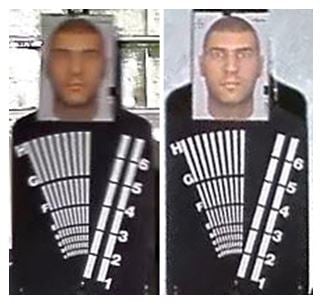Even if not related to an IP camera, misinformation is misinformation. The link he posted has good information in it, how he interpreted it as what he initially said is beyond me.
This is absolutely my last post on the subject.
It is not my intention to inflame Fenderman, it's his forum, his rules.
However, if you can adjust the shutter the speed then yes faster the shutter speed, the more text in each still is readable as there's less travel by the object during the exposure.
CCTV Camera Settings: Here's How to get the Best Picture Possible
Ok, so you have enough ‘pixels on target’ for identification, but what if your target is moving? People often walk. Using one of the UK Home Office CCTV test faces we can see how sufficient detail can still get destroyed (see below right).

The left-hand image has a camera shutter of 1/30s, which is probably true of every camera that’s fitted and left on factory default camera settings. The right-hand image has the shutter deliberately shortened to 1/125s. See the advantage?
The factory default CCTV camera settings give us motion blur at walking speed which destroys the identification details that all those pixels were meant to give us. You need to set a sufficiently fast shutter to freeze the motion.
Now when dealing with cars, which travel at more than walking pace (!), the average distance travelled during the exposure period is higher, so this requires a higher shutter speed to freeze the motion and ensure the text of the number plate is readable. Blur is the result of the object moving during exposure and the faster the shutter speed, the less movement in the exposure period and the less blur.
From the same page:
Shutter Speed vs Frame Rate
Frame rate does not cause blurring. This is a misconception. The camera's automatic shutter speed control does.
THAT said, frame rate is important also.
One of the products of setting too fast a shutter speed, is the video is no longer smooth and moving objects such as cars, tend to "jump" down the road in hops rather than travel. This is the result of the objects travelling a noticeable difference between captured frames (in the period when the shutter is closed), hence the hop from the position in one frame to the next......
Training: Frame Rates for IP Cameras
Walking Examples
As our subject walks through the FOV, we view how far he moves from one frame to the next.
In 30 and 10 fps streams, he does not complete a full stride.
However, in the 1fps example, he has progressed ~4' between frames, which falls in line with our measured walking speed of ~4' a second.
You can see here despite this being 2 steps only, how the subject at 1fps jumps position almost from 1 window to the next. This occurs because the movement between the 2 positions falls during the period when the shutter is closed. At 1fps, the shutter is closed for the majority of the time - 29/30ths of the second at 1/30th second shutter speed.
Increase the frame rate to 10 fps, then the image is captured 10 times during 1 second at 1/30th second each time = 10 x 1/30th frames = 10/30ths = shutter is now only closed for 20/30ths of a second and not 29/30ths. Further more, because the captures are divided between the 1 second period, at 1fps there's a solid block of 29/30ths of a second of no capture, whereas at 10fps the frame is divided into 10 equal periods of 1/30th of capture and 2/30ths of non capture. This means at 1fps, the object can travel 29/30ths of a second without being captured, whereas at 10fps it can travel only 2/30ths of a second without being captured. Thus the chances of it travelling a discernable distances between frames is higher at 1fps, than 10fps. That said, as I said above, the object speed also plays a part as the faster an object is travelling, the greater the distance it can travel in any given time period and thus the greater the distance it can travel during the non captured period, and the higher the risk this travel will be noticeable as a jump.
The jumps are even more pronounced in the capturing faces example below the above one on the linked page.
As I said, now out. Hope that helps you understand was what I was saying.








